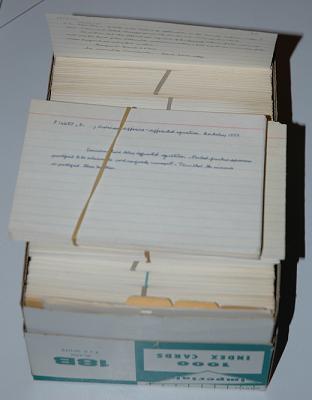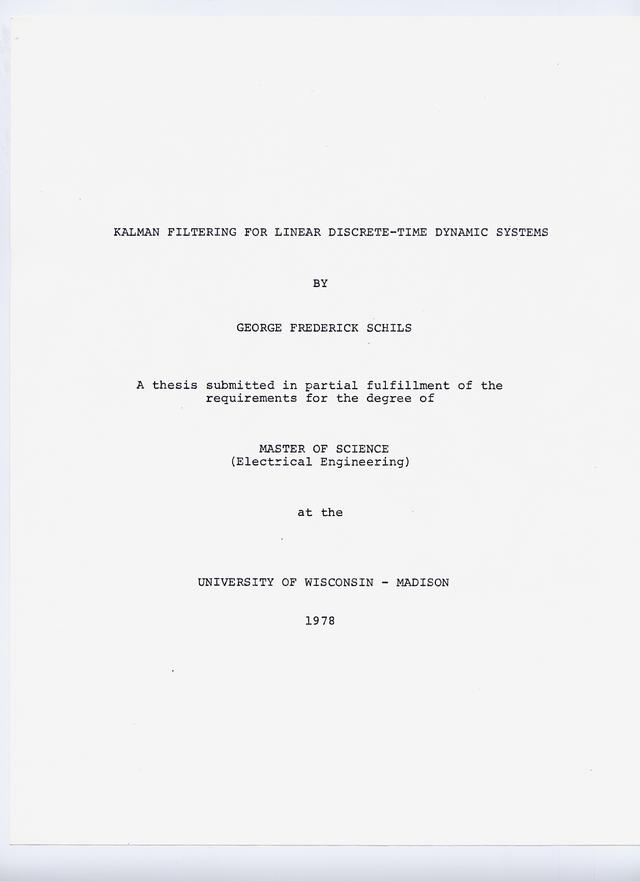This thesis contains no pictures, graphs, or computer
simulations. At that time I knew the correctness based only on
theory. Simulation was not necessary to verify it. Of course since
that time I have come to rely on digital computers, like
everyone.
This thesis was all written by hand, edited by Prof. Higgins,
and diligently typed by Mrs. Thompson. She typed this 200+ page
thesis for $1 a page, with corrections. I paid for it out of my own
funds, which were extremely limited. The whole thesis looks like
the p. 44 excerpt shown above.
As a project for an analog computing course, I derived and
implemented an extended Kalman filter for satellite tracking. This
is based on a set of equations describing orbital dynamics and
observations, with implementation and simulation on an analog
computer. Ironically the first simulation run resulted in
operational amplifier saturation. Funny, coincidentally, the next
day there was news of a satellite crash. After fixing a minor
error, it worked nicely. The analog computer itself was very
interesting: it used +/- 100 volt operational amplifiers, and
consisted of all 1% components.
I may conduct some simulations and studies yet, perhaps using
Mathematica, when and if I get time.


